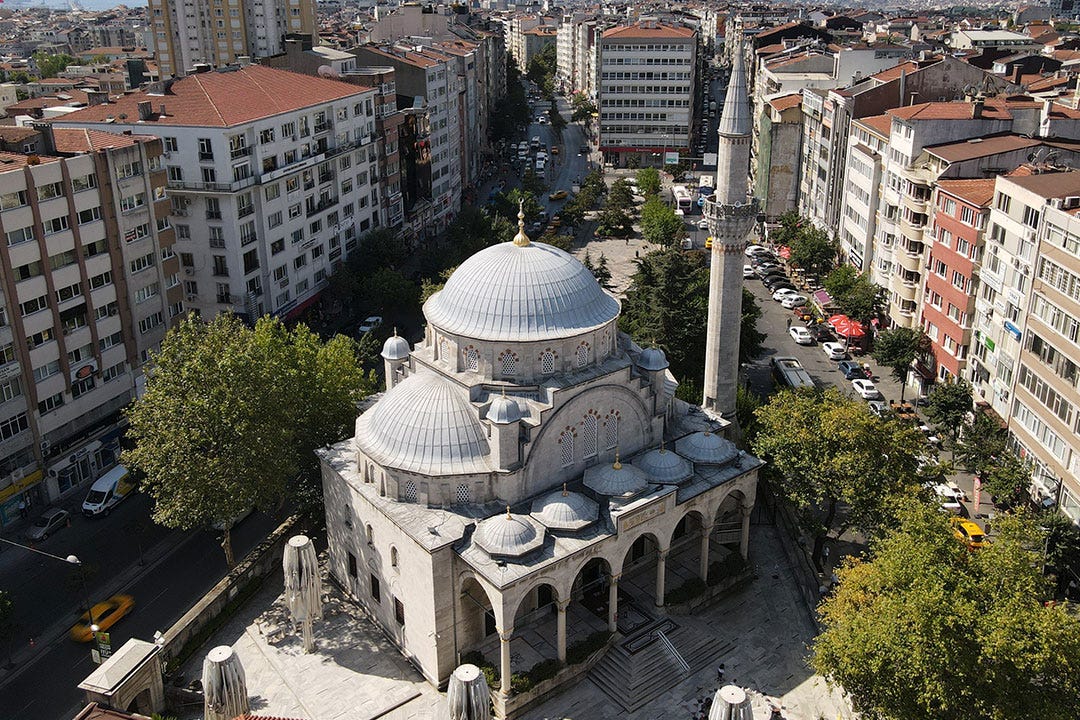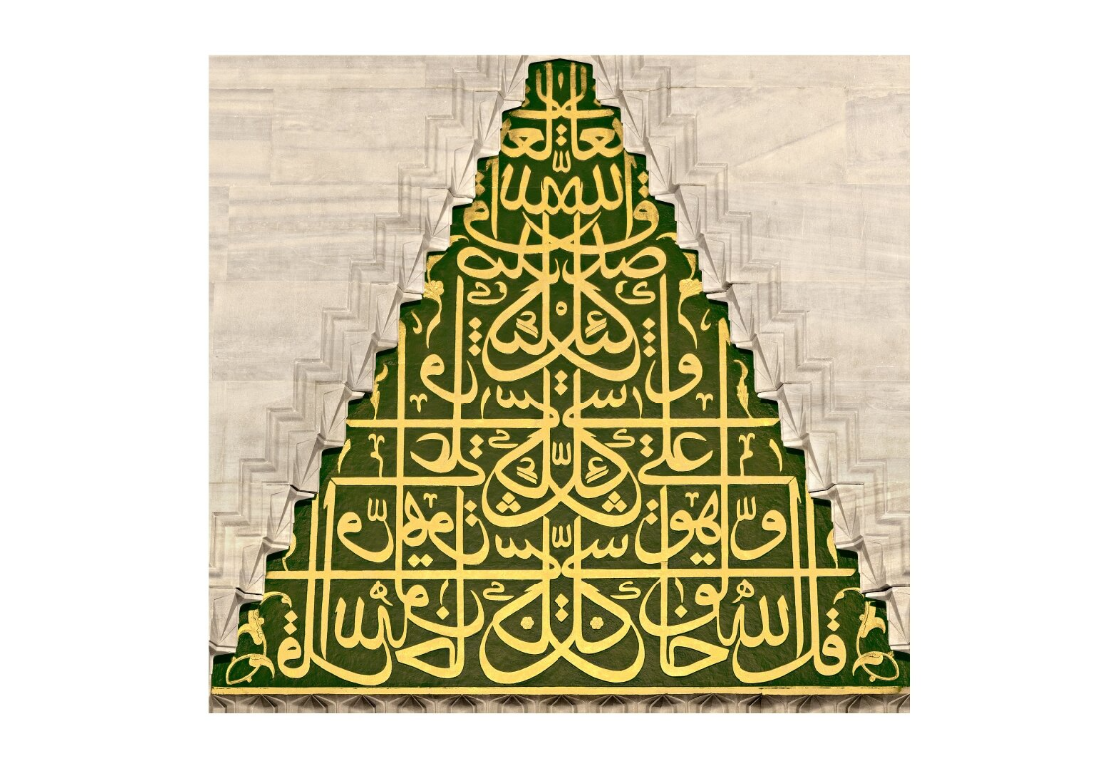The Story of the Entrance Gate Inscription of Şişli Mosque, Told by Hamid Aytaç
Stones that Speak: Calligrapher Hamid Aytaç's Captivating Memory Behind Şişli Mosque's Entrancing Gate Inscription.
Şişli Mosque in Istanbul is a very exquisite work in terms of architecture and art. Actually, it’s the first mosque built in the modern Republic of Turkey. First started in 1945 and opened for worship five years later, there are magnificent examples of the jali thuluth in each of the dimensions surrounding the mosque. The writings are important with both the beauty of letters and the sense of artistry.

Speaking of Şişli Mosque, the first inscription that comes to mind is undoubtedly the mirrored (Muthanna) jali thuluth inscription on the stone at the entrance gate, which adds a special value to the beauty of this distinguished building. Calligrapher Hâmid Aytaç tells the story of one of his most famous and precious works:

“Vasfi Bey (Egeli), the architect of the mosque, wanted the artwork to be written in the mirrored form, similar to the inscription of Demircikulu Yusuf Efendi on the door of the Kılıç Ali Pasha Mosque in Tophane.

To avoid being influenced by him, I did not particularly go and look at Yusuf Efendi’s design and first tried to put together the letters with a pencil. When I started to write with a reed pen, I could not place the lam-alifs.
When I felt tired working on it, I turned off the lights. Hands clasped, I closed my eyes right where I was sitting. Between sleep and wakefulness, I saw the whole design passing before my eyes. The lam-alifs had found their place in the middle.
I woke up excitedly, lit the lamp and completed the work. After it was carved into stone for the mosque, I wrote the same design as a lawha (calligraphic art panel) at different times, in several different sizes.






